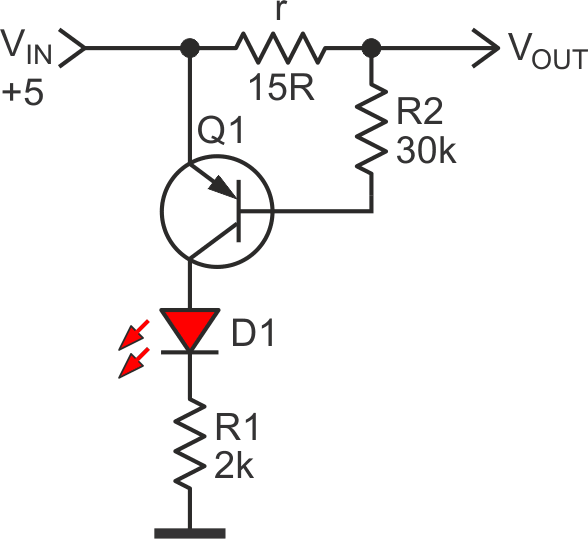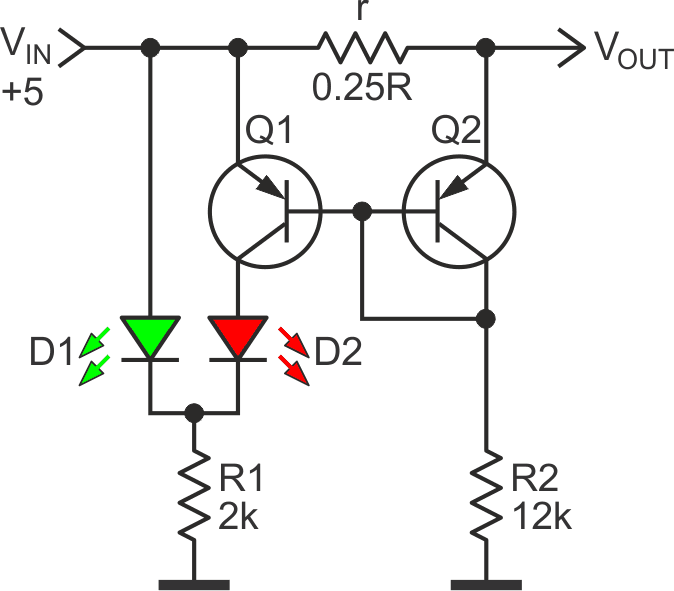Almost every wall power supply has no indicator showing whether current is consumed by the load or not.
It seems that this was a shortcoming that was not only noticed by me: I once saw the solution given in Figure 1.
 |
|
| Figure 1. | Wall power supply indicator solution showing whether or not a current is being consumed by the load or not. |
The thing is that the circuit was not functional – there were only places for the transistor, LED, and resistors on the board, not the elements themselves. It’s easy to say why: the voltage drop base-emitter (VBE) is about 0.7 V, or 15% from the output voltage of this 5-V device. A monitor like this (Figure 1) would only be tolerable with a 12-V device or higher (24 V).
The circuit in Figure 2 is exceptionally good for low voltages, around 3 to 9 V, and for currents exceeding ~50 mA.
 |
|
| Figure 2. | Current monitor circuit for a wall power supply that is good for voltages from 3 to 9 V and currents exceeding 50 mA. |
It provides not only the opportunity to monitor its output current in a more efficient (30x) way, the bi-color LED allows it to estimate the value of the current and indicates the on-state of the device. Of course, the LEDs might be separate as well.
As for Q1, Q2: any low-power PNP with a reasonably high B will do, e.g., BC560.